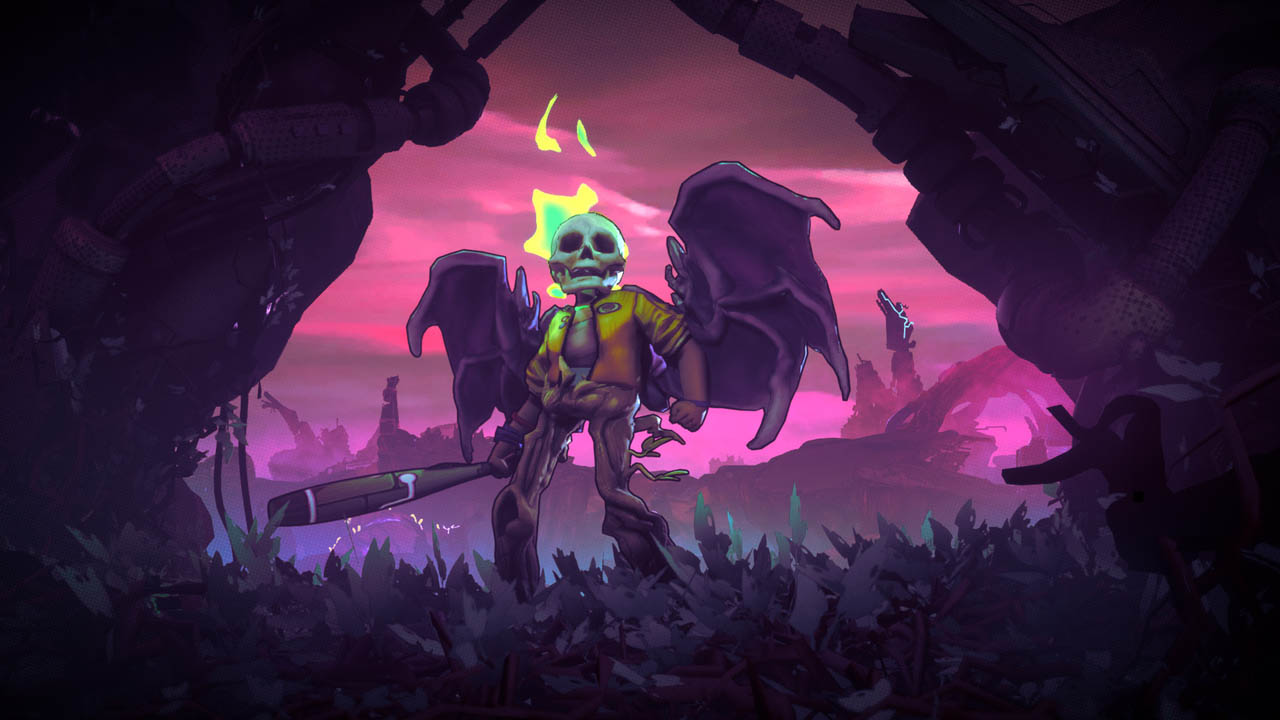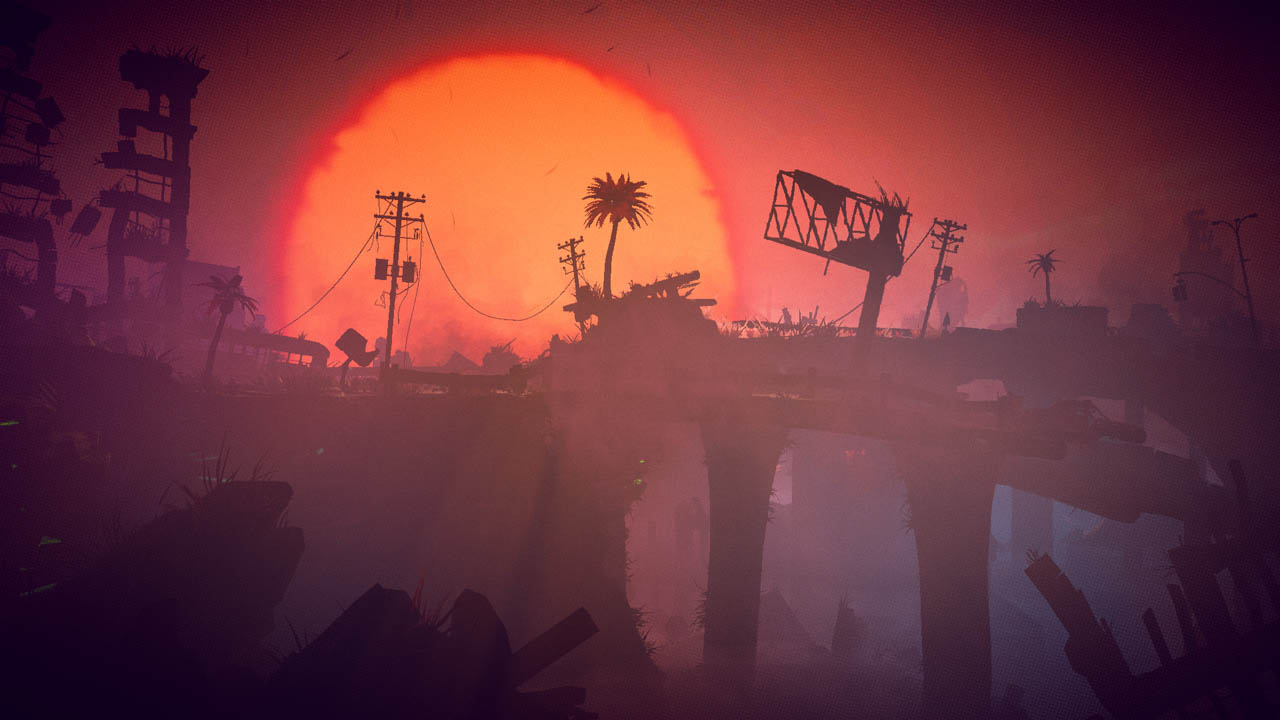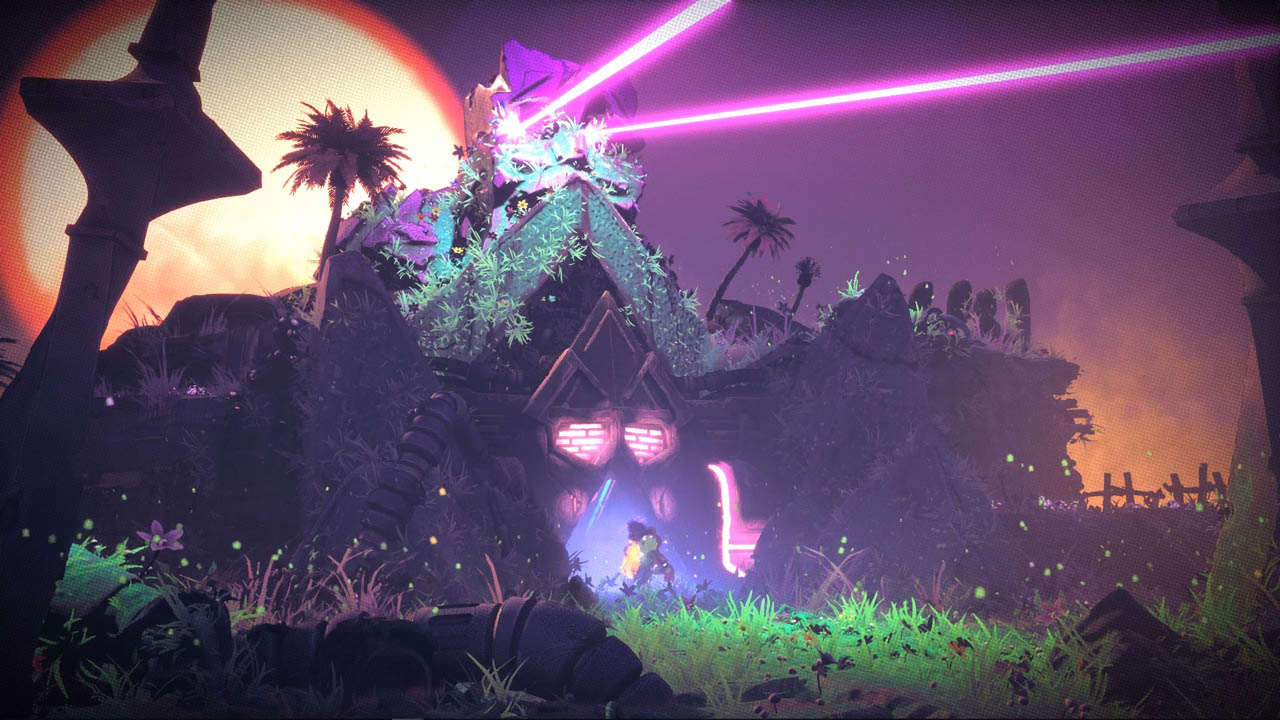Edited by: Jade Swann
It Is
RAD, developed by Double Fine and published by Bandai Namco, is a third-person, isometric rogue-lite where you fight your way across the 1980s apocalyptic landscape. Donning the mantle of one of the Remade, a teenager modified to harness radioactivity to mutate, you will bat, bite, and fireball your way through the old world ruins to reclaim electricity for your colony. Along the way, you'll meet fellow mutants and other colorful characters willing to trade all-too-necessary survival goods for your accumulated tapes. Only the dedicated can truly become rad.
Double Apocalypse, Over Hard

RAD's central conceit is that the world has ended twice. First, when nuclear war broke out and second when a group called the Menders tried to revive the world and failed. The Menders disappeared, leaving their ruins everywhere, dormant and ready for activation. This is where you come in. Your colony has run out of power, and they need a Remade to venture across the wastes and turn it back on. To help in your quest, you're given the Mender Bat, an ancient relic from before the second apocalypse that allows you to activate those said ruins. Functionally, this operates as your primary mode of offense before you can mutate and acquire a more suitable means of fighting. It also leaves a trail of vegetation behind you, serving as an easy way of telling where you've been and offering a speed boost to make backtracking less painful.
In fact, all the Mender ruins you encounter leave vegetation in their wake. These spots also boost your speed and mark your progress on top of their particular effects. Each level sees you activate two or three Mender relics to open a gate to a boss fight which leads to the next level. So far, so basic. Other, optional relics provide passive mutations. These do anything from improving your movement speed to increasing your critical hit chance to allowing you to carry more items. This contrasts with your active mutations mentioned before, which are obtained by collecting rads from killing enemies. These active mutations also vary in effect and aren't just relegated to new attacks. One allows you to grow wings, giving you a higher and longer jump, while another lets you lay eggs that hatch into vaguely disturbing spider-doppelgangers that fight on your behalf.
Teenagers with Attitude
While mutations are assigned at random during any given run, RAD offers multiple different customization options to tailor the apocalypse to your whims. You have your standard "select a character," though this only serves to differentiate the model your character uses. All the different teenagers are the same as far as I can tell. As you die and earn points through your various forays into the wastes, you also unlock what are called quirks. Quirks are different rulesets to play under that make the game harder overall. For example, one relegates you to only using your bat and never being able to mutate. Occasionally, you will also unlock new bats to play with, though these mostly reduce fall damage if you venture off of a level.

RAD's customization options don't just make the game harder. Squirreled away in the options menu are anti-frustration features that allow you to tone down the difficulty eve just a little bit. These are small things like starting with more health or a ranged mutation right out of the gate. While these benefits are undoubtedly palpable, they're by no means an assurance of victory. To beat the game to complete this review, the last run I did was with all the "easy mode" options turned on. I had acclimated to the game, routinely getting to the second boss of three, so I figured these would turn the game into a walk in the park. It was by the time I had been knocked down to one health for the third time that I decided to pay attention and play better.
Neon and Plastic
RAD wears its 80's references on its sleeve. Each teenager is an amalgamation of various tropes from that period, from the jean-shorted and be-ponytailed valley girl to the denim and mohawk punk. While the landscape is blasted and barren, the Mender ruins are traced in neon while the more technological areas look like something ripped out of Far Cry: Blood Dragon. This motif even extends to the running narration over your gameplay, a la the Gauntlet games, declaring “you are rad,” or “eat it, mutie,” as the situation demands. I mean, your main currencies are audio cassette tapes and floppy disks.

Being a Double Fine game, RAD has its tongue firmly planted in its cheek. The opening cutscene has you get struck by lightning while a black-and-purple robed man plays sick riffs on his keytar. Bosses sport names like "Maxotaur" and "B'donk." Occasionally, you'll come across relics in the wild that hold facts about the old world, like how the VHS tribe overcame the Laserdisc tribe despite their inferior technology. These bits of humor do well to cut through the tension from the inherent difficulty of the game.
The Verdict: Excellent
I could probably write another couple of pages on the various merits of RAD, but honestly your time would be better spent playing it. Funny and charming, it executes the rogue-lite formula solidly. If you’re wanting a fresh, new rogue-lite to play, RAD is an easy and earnest recommendation.


